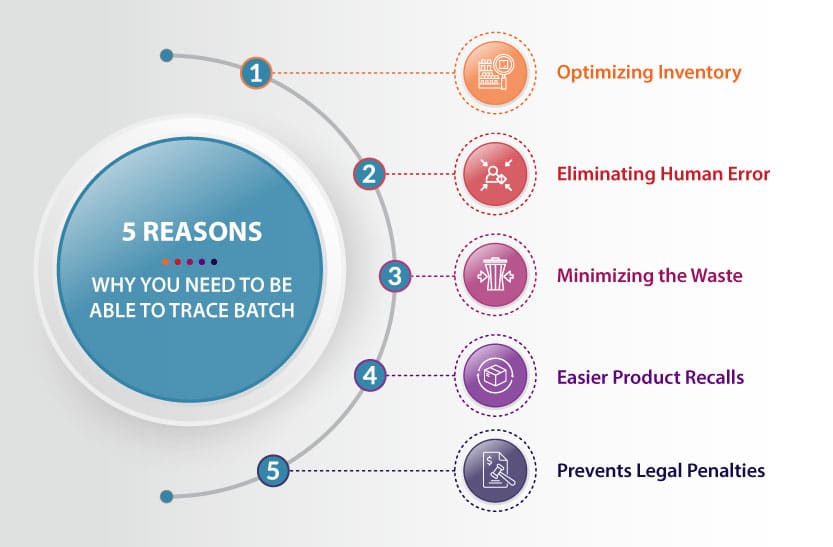
Overview-
The existence of manufacturing can be traced back into 18th Century. The initial period marked the use of hand tools and labor to execute manufacturing processes.
This needed manual strength & an extended period to complete production. But an ardent desire for innovation brought about new ways toward industrialization.
With the industrial revolution, mechanization started taking lead. Even though the process of making finished goods using raw materials is the same, there have been many novel changes in it.
Industries began using supplementary power like steam, and electricity, to mechanize and automate their production.
Now, the manufacturing sector has changed completely, and technology has been the prominent change maker.
Increased customer demand & stringent safety regulations have put all the companies on a cutting-edge competition.
This has led to the rapid adoption of technology and software intelligence to ensure flawless production and increased productivity.
Nevertheless, in a manufacturing business, there are numerous sources of errors. Out of which negligence is the prevailing one.
This single-word term, if not removed, could impact your production process seriously, resulting in faulty products as the outcome.
But never mind this issue has been solved with the competent lot traceability feature of ERP software. Lot traceability is the way out to ensuring flawless production and an uninterrupted supply chain.
It’s a simple phenomenon of tracking every single phase of the production process.
Right from inception to delivering the final product to the consumer, any material that entered the supply chain is monitored properly.
Before moving further into the topic, let’s understand briefly what a “lot” is.
What is a Lot Traceability?
A lot is a batch made by grouping a specific category of products to streamline storage and production, maintain uniformity, and ease the tracking process.
Every lot has a particular lot number, and every product has a unique code assigned to it for individual identification in inventory.
This proves to be particularly useful in tracing the source if any non-conformity/defect is encountered.
Moreover, to simplify the purpose of lot traceability, items having the same traits as production date, expiration date, etc. are grouped together in a lot.
Understanding lot traceability-
Lot traceability is all about labeling & inspecting. Everything from the raw materials to finished goods to delivery and even beyond is labeled & examined closely.
These labels help to scan & store detailed information about every material. Warehouse location, receiving date, supplier details, of a specific product can be seen if any shortcoming is discovered.
An ideal lot traceability refers to the ability to track the entire supply chain—starting from the purchase of raw materials to distributing finished goods to the end customer.
This ensures reduced risk of contamination and consistency in the production.
Bi-directional Traceability- A must-have requirement
Bi-directional traceability is the ability to track both ways, forward and backward.
Where forward traceability allows tracking the product along the supply chain starting right with the supplier from whom the raw material was purchased, moving through the manufacturing process and covering the distribution and sale, when it reaches the end customer as a finished good.
Opposite to this farm-to-fork traceability is the backward traceability, mostly used at the time of recalls, which tells from which warehouse a finishes product was shipped, in which batch the product was produces, which raw material went in its production and from which supplier the raw materials were procured.
This process works by receiving the vendor lot number for every material and associating it with the internal lot number created by the organization.
This helps in getting every detail of the vendor deliveries & customer shipments.

Also read: Infographic: 4 Reasons, Why You Can’t Do Without Traceability
How does it mark its importance in manufacturing?
Specifically, in manufacturing sectors like food and pharma—where accountability is everything, lot traceability plays a prominent role.
It helps in preventing the customers from getting affected due to adverse reactions caused because of faulty products.
Overlooking such scenarios of manufacturing defective products hampers brand reputation and turns down the possibilities of future growth.

For the manufacturers who produce consumable products, lot traceability plays a prominent role.
For instance, in case of food items—whether it be raw materials or finished goods, both have a shelf life and an expiration date, which is of great concern.
Over this, the lot numbers are created with the date embedded in them through which the product can be easily tracked whose expiration date is nearer reducing the wastage directly.

Irrespective of the industry type, lot tracking provides an array of benefits to every organization:
Inventory Management-
Lot tracking is the foundation of the inventory management process. Right from receiving materials in the inventory to shifting them for production and then shipment, every material can be monitored using specific barcodes for each.
This delivers a real-time view of the inventory, and a broader field of vision to know about the used raw materials and the quantity left over.
Increasing Efficiency-
While locating a product for inventory counting or detecting a defect in case of any quality issue, without lot traceability you probably end up wandering in the warehouse
But, with the lot traceability feature, it becomes easy to track every piece of information about that material. (Even if it is involved in multiple production runs).
Minimizing the waste-
Every product degrades over time and hence should be monitored carefully.
The lot traceability solution helps to keep a tab on the expiration dates of inventory materials to apply the First in First Out or First Expired First Out (FEFO) method so that companies can ensure maximum usage & minimum inventory waste.
Prevents legal penalties-
Industries such as food and pharma, where even the smallest inconsistency or contamination could put down the company under heavy fines. Lot traceability takes up the charge and prevents the delivery of defective products.
Also, ERPs with the lot traceability feature allows documenting the lifecycle of every product to prevent the company from getting caught in legal actions and staying FDA/ISO compliant.
Easier Product Recalls-
Even after minimizing defects to a great extent, if a company faces the situation of delivering faulty goods, it’s easy to track that specific lot with lot traceability.
With the lot number, the location of the contaminated lot can be easily found – resulting in easy recall without calling back every one of the sold products.
Delay Minimization-
Its not wrong to say that delay in tracing back faulty lots during recall, can lead to amplification of its impact. And without an automated tracking system, the process will take more time and more labor.
Such situations might raise doubt about the manufacturer’s credibility and goodwill of the business.
This can be avoided with an automated lot traceability system that increases efficiency by triggering product recalls.
How to enable lot tracking in an organization-
There are many manufacturers who think searching & implementing a good traceability system is as hard as finding a coin underwater. But truly, it’s not.
The fact is a good lot traceability system upholds the capability of tracking & verifying even the source from where the material is coming or has arrived.
Moreover, it also ensures that production processes are compliant with all the safety standards and helps companies to stay away from legal implications.
We are here to help-
BatchMaster ERP with competent & robust lot traceability software provides process manufacturers with increased visibility into the production process for performing faster product searches and recalls.
If you also want to make your day-to-day manufacturing operations efficient and compliant, then get in touch with our team of experts and request a demo of specific functions.



















